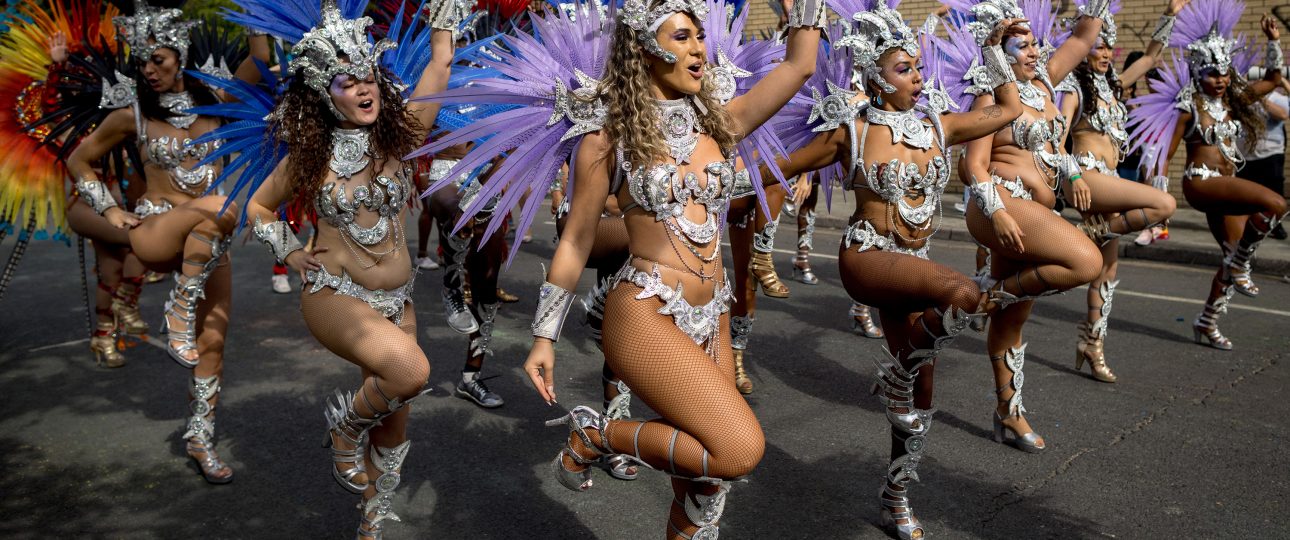Notting Hill Carnival 2023: A Vibrant Celebration in England
The History of Notting Hill Carnival
The Notting Hill Carnival has deep roots that trace back to the late 1950s. It began as a response to racial tensions in the UK, with the first “Caribbean Carnival” held indoors in 1959, organized by Trinidadian journalist Claudia Jones. The outdoor event we know today started in 1966, inspired by a community festival aimed at promoting cultural unity. Over the years, it evolved into a massive street festival, thanks to contributions from figures like Leslie Palmer, who expanded the event in the 1970s by introducing more music bands and sound systems.
Cultural Significance
The carnival is a vibrant celebration of London’s Caribbean community, showcasing their rich cultural heritage. It features colorful costumes, delicious Caribbean cuisine, and music genres like reggae, soca, and calypso. The event underscores London’s multicultural identity and fosters a sense of unity among diverse communities.
Highlights of Notting Hill Carnival
- Vibrant Parade: The parade is a spectacle of elaborate costumes and energetic dance performances. It winds through the streets of Notting Hill, pulsating with rhythm and color.
- Food and Drink: The carnival is a culinary delight, with food stalls offering Caribbean favorites like jerk chicken and fried plantains. It’s a chance to indulge in authentic flavors.
- Live Music and Performances: Enjoy live performances from both local and international artists. The infectious beats of reggae and soca create an atmosphere that’s hard to resist.
- Children’s Day: This family-friendly event kicks off the carnival, featuring a parade for children who showcase their creativity and talent.
Best Time to Visit
The carnival takes place during the August Bank Holiday weekend, typically the last weekend of August. This is a peak time for tourism in London, so expect large crowds. Despite the hustle and bustle, the vibrant atmosphere makes it a worthwhile experience.
How to Get There
Notting Hill Carnival is easily accessible due to its central location in London. Here are some transportation options:
- Public Transportation: Use London’s extensive tube network to reach stations like Notting Hill Gate, Ladbroke Grove, or Westbourne Park, all within walking distance of the carnival route.
- Bus: Several bus routes serve the area, offering a convenient alternative to the tube.
- Cycling: Consider renting a bicycle for a scenic ride to the carnival. London’s bike-sharing scheme is an affordable and eco-friendly option.
Local Transportation and Navigation Tips
- Comfortable Shoes: Wear comfortable shoes as you’ll be on your feet for most of the day. The carnival route covers a significant distance.
- Plan Your Route: Familiarize yourself with the carnival route beforehand. The official Notting Hill Carnival website provides detailed maps and schedules.
- Stay Hydrated: With large crowds and energetic dancing, staying hydrated is crucial. Carry a reusable water bottle and use the water stations along the route.
- Stay Aware of Your Belongings: Be mindful of your belongings in the crowded environment. A cross-body bag or money belt can help keep your valuables secure.
Summary of Facts
- The Notting Hill Carnival is held annually during the August Bank Holiday weekend in London, England.
- It originated from the Caribbean community and celebrates their culture and traditions.
- The carnival features a vibrant parade, Caribbean cuisine, live music, and performances.
- Children’s Day is a family-friendly event that precedes the main carnival.
- Public transportation, including the tube and buses, is the most convenient way to reach the carnival.
- Comfortable shoes, planning your route, staying hydrated, and keeping your belongings secure are important tips for navigating the carnival.




